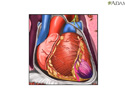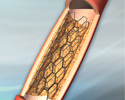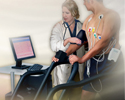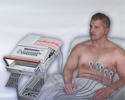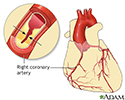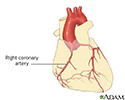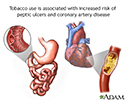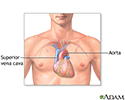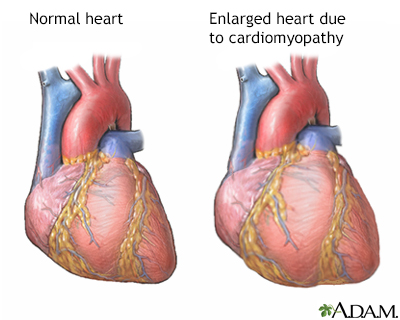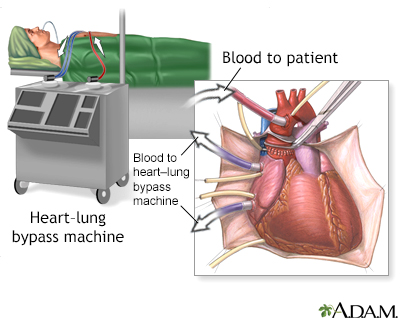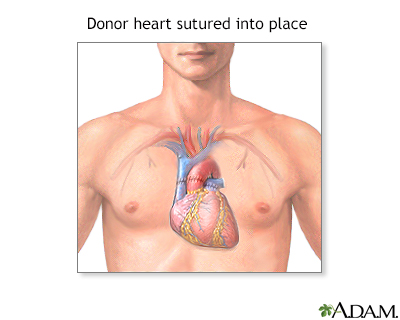Coronary artery disease - InDepth
Hardening of the arteries - InDepth; Arteriosclerosis - InDepth; Plaque buildup - arteries - InDepth; Hyperlipidemia - atherosclerosis - InDepth; Cholesterol - atherosclerosis - InDepth; Angina - InDepth; Atherosclerosis - InDepth; Heart disease - InDepthAn in-depth report on the causes, diagnosis, treatment, and prevention of coronary artery disease (CAD).
The Basics
Tests for Coronary artery disease
A Closer Look
Self Care
- Diabetes - preventing heart attack and stroke
- Cholesterol and lifestyle
- Living with heart disease and angina
- Heart disease - risk factors
- Being active when you have heart disease
- Angina - when you have chest pain
- Cardiac rehabilitation
- Dietary fats explained
- Butter, margarine, and cooking oils
- Simple, heart-smart substitutions
Talking to your MD
Coronary artery disease - Animation
Coronary artery disease
Animation
Stent - Animation
Stent
Animation
Nuclear stress test - Animation
Nuclear stress test
Animation
Electrocardiogram - Animation
Electrocardiogram
Animation
Coronary artery disease
The coronary arteries supply blood to the heart muscle itself. Blood supply through these arteries is critical for the heart. Coronary artery disease usually results from the build-up of fatty material and plaque, a condition called atherosclerosis. As the coronary arteries narrow, the flow of blood to the heart can slow or stop, causing chest pain (stable angina), shortness of breath, heart attack, or other symptoms.
Coronary artery disease
illustration
Coronary artery disease
The right coronary artery supplies blood from the aorta to the right side of the heart.
Coronary artery disease
illustration
Tobacco and vascular disease
Tobacco use and exposure may cause an acceleration of coronary artery disease and peptic ulcer disease. It is also linked to cancer, stroke, COPD, fetal illness, and delayed wound healing.
Tobacco and vascular disease
illustration
Heart transplant - series
Presentation
Coronary artery disease - Animation
Coronary artery disease
Animation
Stent - Animation
Stent
Animation
Nuclear stress test - Animation
Nuclear stress test
Animation
Electrocardiogram - Animation
Electrocardiogram
Animation
Coronary artery disease
The coronary arteries supply blood to the heart muscle itself. Blood supply through these arteries is critical for the heart. Coronary artery disease usually results from the build-up of fatty material and plaque, a condition called atherosclerosis. As the coronary arteries narrow, the flow of blood to the heart can slow or stop, causing chest pain (stable angina), shortness of breath, heart attack, or other symptoms.
Coronary artery disease
illustration
Coronary artery disease
The right coronary artery supplies blood from the aorta to the right side of the heart.
Coronary artery disease
illustration
Tobacco and vascular disease
Tobacco use and exposure may cause an acceleration of coronary artery disease and peptic ulcer disease. It is also linked to cancer, stroke, COPD, fetal illness, and delayed wound healing.
Tobacco and vascular disease
illustration
Heart transplant - series
Presentation
Coronary artery disease - InDepth
Hardening of the arteries - InDepth; Arteriosclerosis - InDepth; Plaque buildup - arteries - InDepth; Hyperlipidemia - atherosclerosis - InDepth; Cholesterol - atherosclerosis - InDepth; Angina - InDepth; Atherosclerosis - InDepth; Heart disease - InDepthAn in-depth report on the causes, diagnosis, treatment, and prevention of coronary artery disease (CAD).
The Basics
Tests for Coronary artery disease
A Closer Look
Self Care
- Diabetes - preventing heart attack and stroke
- Cholesterol and lifestyle
- Living with heart disease and angina
- Heart disease - risk factors
- Being active when you have heart disease
- Angina - when you have chest pain
- Cardiac rehabilitation
- Dietary fats explained
- Butter, margarine, and cooking oils
- Simple, heart-smart substitutions
Talking to your MD
Coronary artery disease - InDepth
Hardening of the arteries - InDepth; Arteriosclerosis - InDepth; Plaque buildup - arteries - InDepth; Hyperlipidemia - atherosclerosis - InDepth; Cholesterol - atherosclerosis - InDepth; Angina - InDepth; Atherosclerosis - InDepth; Heart disease - InDepthAn in-depth report on the causes, diagnosis, treatment, and prevention of coronary artery disease (CAD).
The Basics
Tests for Coronary artery disease
A Closer Look
Self Care
- Diabetes - preventing heart attack and stroke
- Cholesterol and lifestyle
- Living with heart disease and angina
- Heart disease - risk factors
- Being active when you have heart disease
- Angina - when you have chest pain
- Cardiac rehabilitation
- Dietary fats explained
- Butter, margarine, and cooking oils
- Simple, heart-smart substitutions
Talking to your MD
Review Date: 1/16/2021
Reviewed By: Thomas S. Metkus, MD, Assistant Professor of Medicine and Surgery, Johns Hopkins University School of Medicine, Baltimore, MD. Also reviewed by David Zieve, MD, MHA, Medical Director, Brenda Conaway, Editorial Director, and the A.D.A.M. Editorial team.
